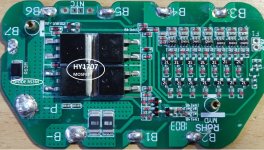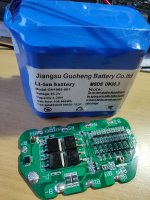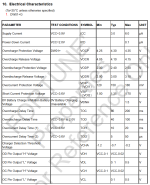samsungante
1 µW
- Joined
- Feb 25, 2021
- Messages
- 3
Basically, I am doing a small portable battery bank out of thesee hoverboard batteries (110Wh) for my school project.
But in my paper I should describe basic principle of operation of every component. I have no clue in power electronics and im stuck at BMS description,
All i know is that there is 7 controlers for every series part.
I see 4 MOSFETS and RS3M diode that connects B7 and P- section. Is there any short circuit protection ?
Please if anybody can regognize anything more in detail on this PCB be welcome to comment.
I have no idea is this 10A or 15A.
is there any balancing implemented ? i mean there could be even if there is no resistors for charge bleed, maybe some other type ?


But in my paper I should describe basic principle of operation of every component. I have no clue in power electronics and im stuck at BMS description,
All i know is that there is 7 controlers for every series part.
I see 4 MOSFETS and RS3M diode that connects B7 and P- section. Is there any short circuit protection ?
Please if anybody can regognize anything more in detail on this PCB be welcome to comment.
I have no idea is this 10A or 15A.
is there any balancing implemented ? i mean there could be even if there is no resistors for charge bleed, maybe some other type ?




